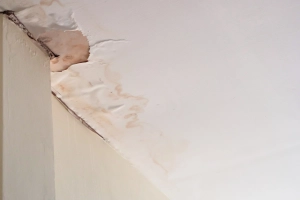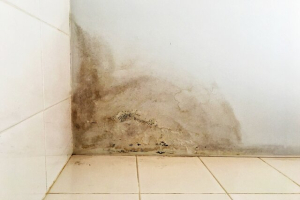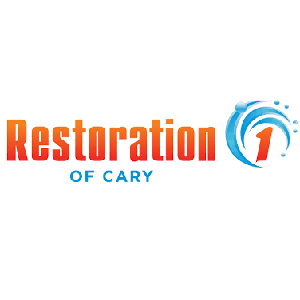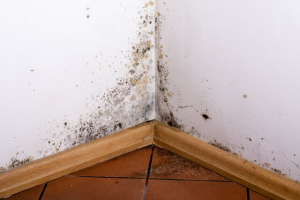Restoration 1 Cary
At Restoration 1, we help people get their property and life back to normal when they’re dealing with water, mold, or fire damage. We understand that our customers are going through a taxing and emotionally trying time. This is why our restoration specialists strive to be attentive, and offer upfront communication, and valuable services to our customers.
Most people struggle to clean up the mess after a disaster such as a flood or fire. We’ve created a straightforward process to guide our customers through their property restoration. With one phone call, your life can get back to normal.
How To Tell if Water Damage Is New or Old
Have you noticed water stains on the ceiling or warping along the baseboards of your living room? The presence of water damage can stir up concern and confusion, especially if you’re uncertain if it’s a recent issue or a long-hidden problem.
Learning how to tell if water damage is new or old can help you understand the urgency of the situation and prepare for the restoration journey ahead. Some water incidents, like flooding, occur in the open, but many happen in seclusion: behind walls, under floors, or in attics or basements. When they do, they can continue to wreak havoc on your property and go unnoticed for long periods.
This guide delves into the five signs of new and old water damage to help you proactively safeguard your property and enlist expert help when you need it most.

How To Tell if Water Damage Is New or Old: Signs of New Water Damage
If you suspect recent water damage, here are five signs to help you confirm your suspicions and get expert help before further issues arise:
1. Discoloration and Stains
Fresh water damage often appears as dark, wet patches or streaks that contrast with the surrounding areas. These stains are typically darker when the damage is fairly new, as the moisture has not yet had time to dry out. Over time, the stains will fade and may take on a yellowish or brownish hue.
2. Early Signs of Warping and Swelling
Warping and swelling are common water damage indicators, especially in wood and drywall materials.
In the early stages, you might notice slight changes in the shape or texture of these materials. For instance, wooden floors or furniture may begin to bend or curve slightly, while drywall may start to bulge. Structural materials like wood expand when they absorb water, leading to noticeable changes in their appearance or alignment.
3. Peeling or Bubbling Paint and Wallpaper
Recently water-damaged areas may show peeling or flaking paint due to the loss of paint adhesion. Water can undermine the adhesive qualities of paint, causing it to lose grip on walls and ceilings. These signs are especially common in areas with high moisture exposure, such as bathrooms and kitchens.
You might also notice small bubbles forming beneath the paint with cases of new damage. These bubbles are pockets of moisture that have recently accumulated.
4. Musty Odors
When water infiltrates your home, it creates an environment conducive to mold growth. These microorganisms emit a distinctive musty odor that can be easily detected. New water damage typically produces a fresh, damp scent like wet cardboard or paper. You could be facing new water damage if you notice this sudden, unexplained musty smell in your home.
Investigating the source of the odor and addressing the underlying water issue can help keep mold from spreading and causing health problems.
5. Soft or Spongy Materials
Materials compromised by water can feel different to the touch. If your walls, ceilings, or floors have new water damage, they can feel soft, spongy, or mushy when you press on them. This is particularly true for absorbent materials like carpet or insulation, which can quickly take in water and feel wet or squishy soon after being exposed.
In the case of drywall, pressing gently on the affected area may cause it to give way or crumble. For wooden surfaces, you might notice that they feel softer or more pliable than usual.

Indicators of Old Water Damage
While new water damage presents its own challenges, old water damage can lead to more severe structural and health issues. This leads us to critical questions: Is the water stain on the ceiling old or new? How can you tell if you’re dealing with an old problem?
Here are five signs of old water damage on your ceilings, walls, and other surfaces to help you understand if your home has been affected for a long time:
1. Persistent Stains and Discoloration
One of the most common signs of old water damage is persistent stains and discoloration on walls, ceilings, or floors. Unlike new water damage, which appears as dark and wet patches, old water damage stains are typically yellowish or brownish. These stains may have been present for a long time, indicating that water damage occurred in the past and was never adequately addressed.
If you notice such discoloration, it’s critical to have it investigated further to determine the extent of the damage and take appropriate action to address the issue.
2. Warped or Buckled Flooring
Old water damage can cause flooring materials, particularly wood and laminate, to warp or buckle over time. These materials expand and change shape as they absorb water. However, as the water evaporates, the materials may not return to their original form, resulting in permanent warping, buckling, and even brittleness.
If your floors are uneven, have gaps, or feel fragile, it could be a sign of old water damage. Replacing or repairing the affected flooring and tackling the moisture source can help restore its integrity.
3. Persistent Musty Odors and Visible Mold
Unlike the sudden musty odor associated with new water damage, a long-standing musty smell paired with visible mold growth suggests that water damage has been present for a while—and has allowed mold to establish and spread inside your home.
Mold can pose serious health risks, so it’s critical to immediately remove the mold and the underlying water damage that’s promoting its growth.
4. Dry Rot in Wood
Dry rot is a type of fungal decay that can cause wood to become brittle and prone to crumbling. It occurs when wood is exposed to moisture over an extended period, allowing fungi to thrive and break down the wood fibers.
If your home’s beams, joists, or any other wooden structure has become soft or brittle, dry rot due to old water damage may have already occurred. Repairing or replacing the affected wood and eliminating the source of moisture is crucial to prevent further structural damage.
5. Rust and Corrosion
Rust and corrosion on metal surfaces and fixtures are common signs of old water damage. When metal is exposed to moisture for an extended period, it oxidizes, leading to rust and corrosion. This can affect various parts of your home, including pipes, appliances, and hardware.
Pay attention to the condition of any exposed metal in moist areas, such as under sinks, around water heaters, and near appliances.
What’s Next After Discovering Water Damage?
Whether you’ve identified old or new water damage, there’s no time to waste. It can be tempting to go ahead and proceed with the repairs yourself, but it’s more practical, safe, and time-efficient to call water damage restoration experts as soon as possible. These professionals have the know-how and equipment to assess the situation, address your water damage concerns, and make your home safe and dry again in no time.
Whatever Damage You Have, You Can Always Call Restoration 1 for Help
Don’t hesitate to get help from Restoration 1 as soon as you spot any of the warning signs described above. We understand the stress and urgency of dealing with water damage, and we’re ready to spring into action to mitigate, prevent, or repair whatever damage you may have.
Contact us for expert assistance now. Restoration 1’s friendly and knowledgeable pros are here to protect your property and restore your peace of mind. VIEW ALL BLOGS



